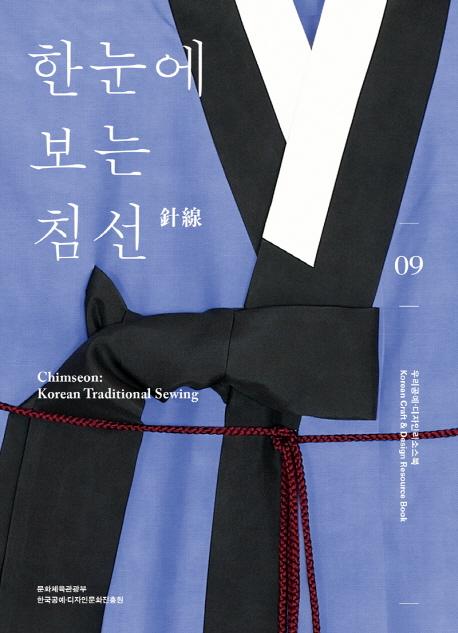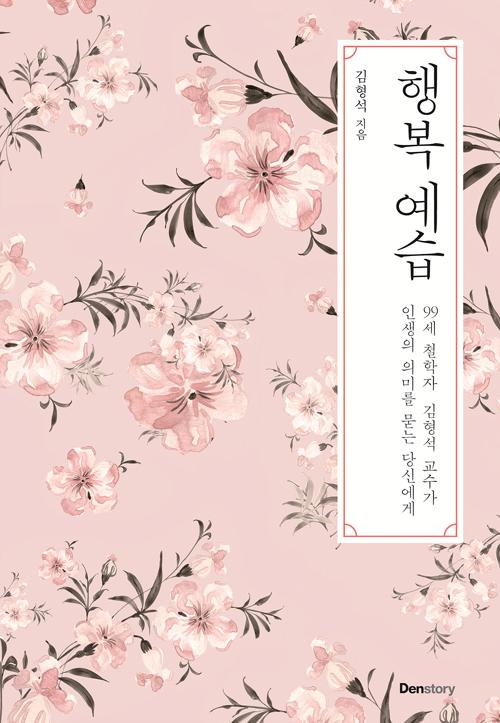- 주문상품수량
- 개
- 예상적립금
P - 상품할인금
- 원
- 배송료
- 원
- 주문합계
- 원
네비게이션 실시간 인기 책
Chimseon Korean Traditional Sewing
시리즈 : 우리공예 디자인리소스북 시리즈 [11]
- Park Ga-young, Kim Yeo-kyung, Song Su-jin 저
- 한국공예디자인문화진흥원
- 2016년 01월 29일
-
정가16,000원
-
판매가14,400원 [10% 할인]
-
페이코혜택가
페이코 혜택가 안내
3천원 이상 구매 시 1,500원 할인ID당 총 3회 할인가능
-
페이코혜택가
페이코 혜택가 안내
3천원 이상 구매 시 500원 할인ID당 총 3회 할인가능
-
결제 혜택무이자
카드할인/포인트결제 안내
제휴카드
반디앤루니스 롯데카드 결제금액 최대 25% 청구할인 (1만원 이상 결제건에 한해 월 2회, 건당 최대 1만원 할인) 반디앤루니스 우리V카드 결제금액 10% 청구할인 포인트결제
OK캐쉬백 포인트 최소 10원부터 전액 사용 or 1% 적립 현대카드 M포인트 결제금액의 최대 10% 사용 가능 신한카드 포인트 결제금액의 최대 10% 사용 가능(일부카드) 하나(구.외환) 포인트 보유 한도 내에서 100% 사용 가능 씨티카드 포인트 결제금액의 최대 50% 사용 가능 할인카드
NH농협 TAKE5카드 20% 청구할인(Edu Pack) 채움 플래티늄 멀티카드 20% 청구할인 모바일 Tmoney 신한카드 10% 청구할인 신한카드 Shopping 10% 청구할인 NH농협 체크카드 10% 청구할인 NH20 해봄 신용카드 10% 청구할인 씨티 클리어 카드 7% 청구할인 NH20 해봄 체크카드 5% 청구할인 NH농협 LADY다솜카드 5% 청구할인 신한카드 큐브 5% 청구할인 신한카드 큐브 PLATINUM# 5% 청구할인 
무이자 안내

-
적립금800원 적립 [5%P]
NAVER Pay 결제 시 네이버페이 포인트 5% 적립 ?
추가 적립금 안내
[2천원 추가 적립]
총 주문금액 5만원 이상 구매 시 2,000원 추가 적립
도서(eBook포함)만 구매 시 적립 대상에서 제외업채배송상품 포함(기프트, 업체배송 등) 5만원[멤버십 추가 적립]
슈퍼루니 : 3% 추가 적립
골드루니 : 2% 추가 적립
실버루니 : 1% 추가 적립
단, 국내도서, eBook만 구매 시 적립 불가

-
네이버마일리지적립


품절된 상품입니다.
지금 이책은
- 판매지수 : 35
이 분야의 베스트셀러
-
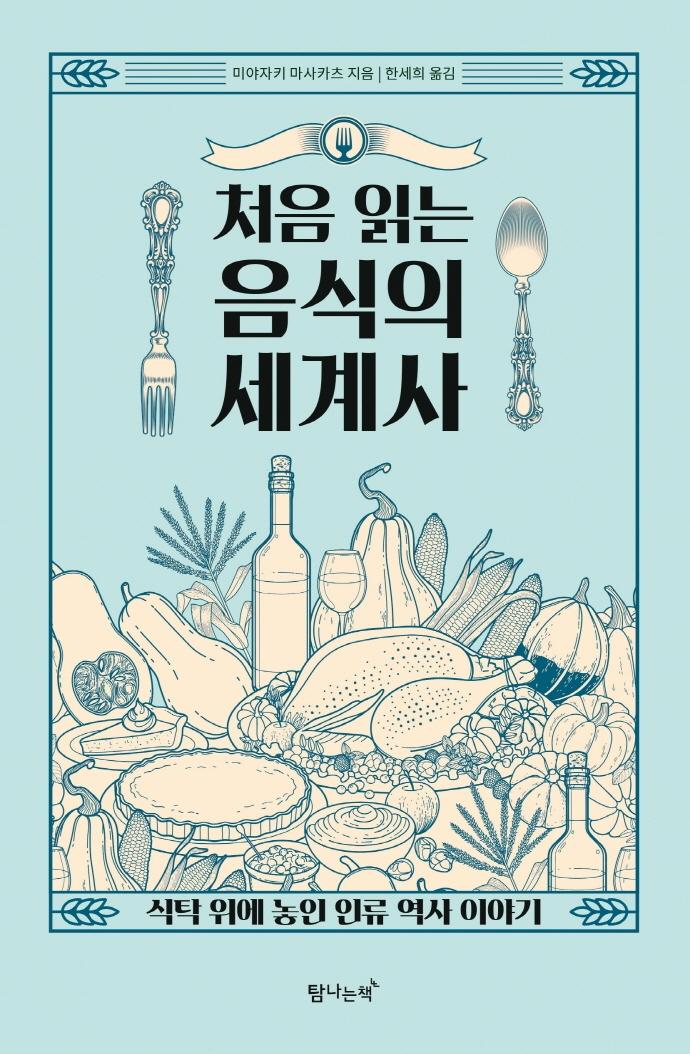 처음 읽는 음식의 세계사
미야자키 마사카츠
14,400원
처음 읽는 음식의 세계사
미야자키 마사카츠
14,400원
-
 처음 읽는 술의 세계사
미야자키 마사카츠
14,400원
처음 읽는 술의 세계사
미야자키 마사카츠
14,400원
-
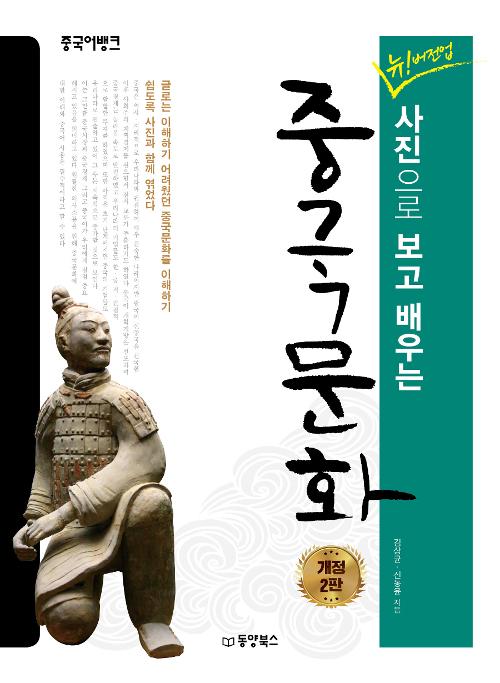 뉴!버전업 사진으로 보고 배우는 중국문화
김상균, 신동윤
15,500원
뉴!버전업 사진으로 보고 배우는 중국문화
김상균, 신동윤
15,500원
이 책과 함께 구매한 책
이 책의 시리즈
-
-

[품절] 한눈에 보는 침선 14,400원 (10%↓+5%P)
-
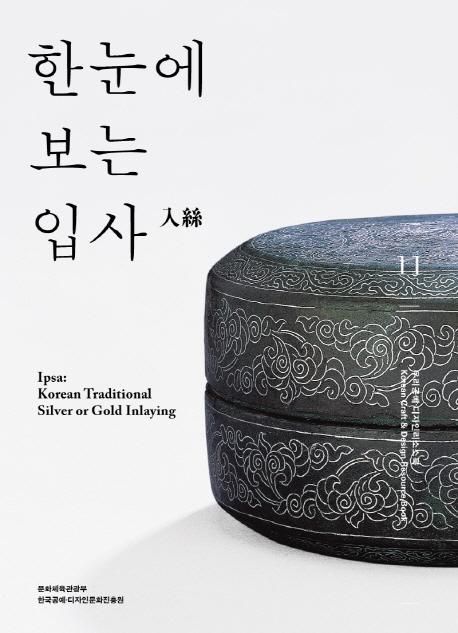
[품절] 한눈에 보는 입사 14,400원 (10%↓+5%P)
-
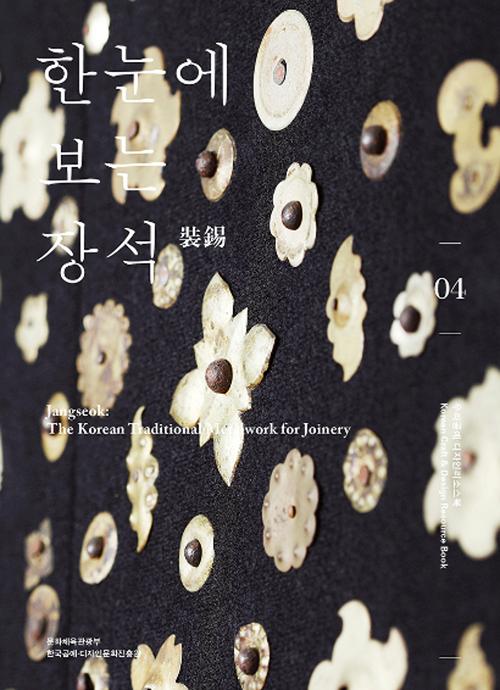
[품절] 한눈에 보눈 장석 14,400원 (10%↓+5%P)
-

[품절] Hwahye : Korean Traditional Shoes 14,400원 (10%↓+5%P)
-
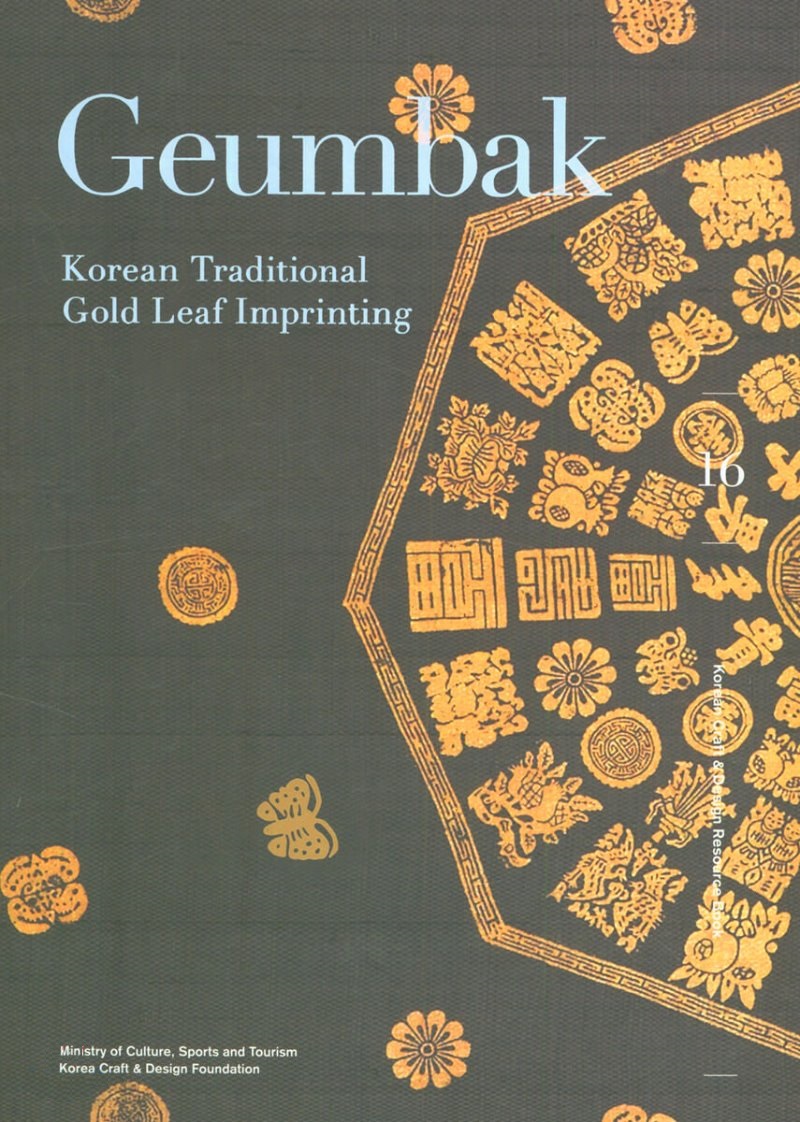
[품절] Geumbak : Korean Traditional Gold ... 14,400원 (10%↓+5%P)
-
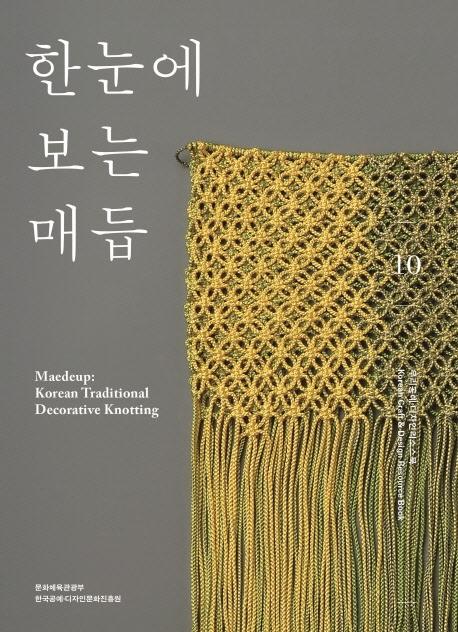
[품절] 한눈에 보는 매듭 14,400원 (10%↓+5%P)
-
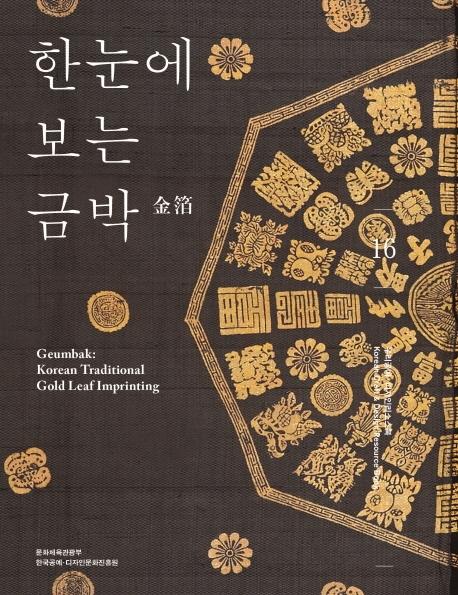
[품절] 한눈에 보는 금박 14,400원 (10%↓+5%P)
-
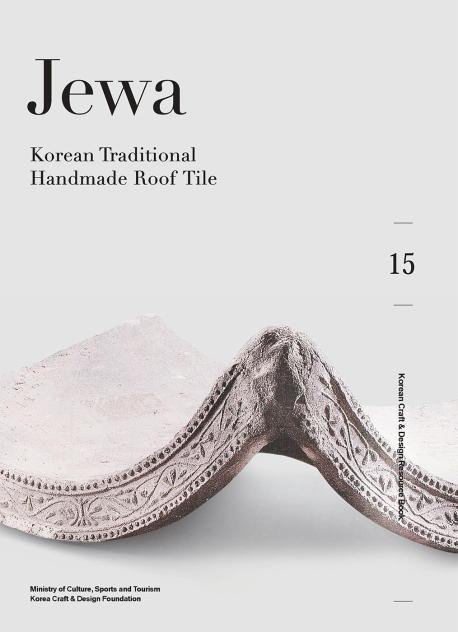
[품절] Jewa : Korean Traditional Handmade... 14,400원 (10%↓+5%P)
-
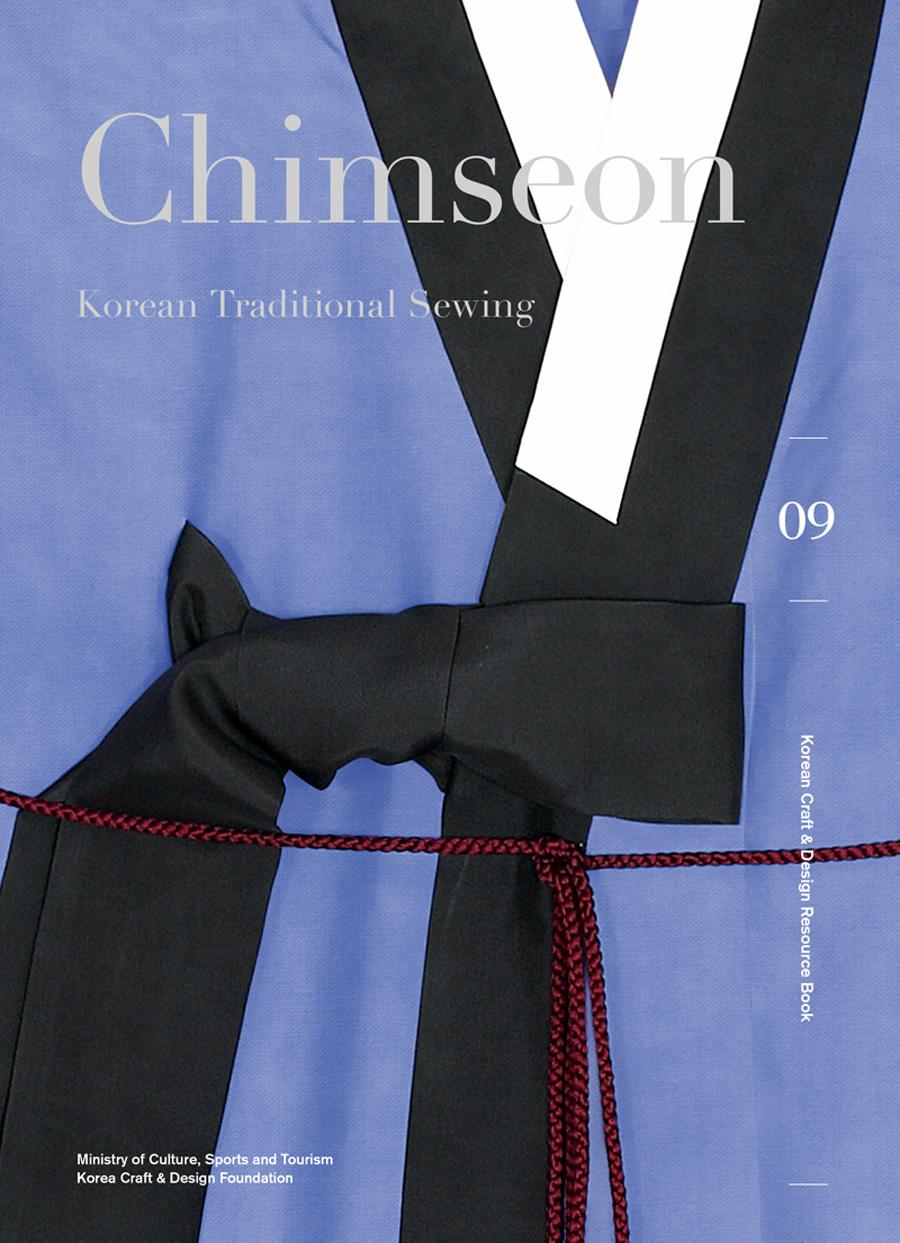
[품절] Chimseon 14,400원 (10%↓+5%P)
-
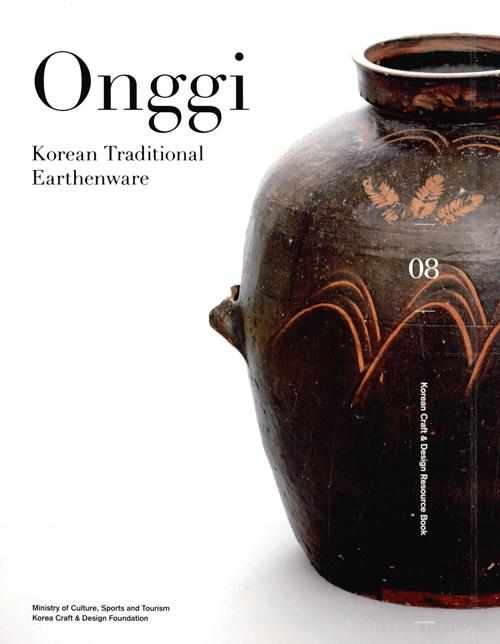
[품절] Onggi 14,400원 (10%↓+5%P)
-

[절판] 한눈에 보는 전통천연염색[국문] 12,000원 (0%↓+3%P)
-
책 소개
출판사 리뷰
<Chimseon: Korean Traditional Sewing> is organized into four chapters.
The first chapter: “Chimseon: An Introduction”, introduces the definition, characteristics, history, various types and the masters of , who have been succeeding Korean in its quintessential form in the royal household of the Joseon dynasty.
The second chapter: “Preparing Chimseon”, explores materials, tools, basic and decorative techniques necessary for. Following the basic processes provided in this chapter will make the skills available for the creation of various products to readers.
The third chapter: “Crafting Chimseon”, outlines the crafting of basic items, i.e. upper garment, skirt, pants, traditional vest, and patchwork wrapping cloths, a representative item of women’s quarters. methods have evolved over time and vary slightly from master to master, thus the most commonly used methods are introduced here. Effort was made to provide a systematic guide of the process, to convey the order and process concisely, yet sufficiently.
The fourth chapter: “Enjoying Chimseon”, explores how our ancestors utilized in artifacts and introduces modern reinterpretations made to suit contemporary aesthetics by today’s masters. Despite the difficulty to choose from among a myriad of artifacts and modern pieces, an attempt was made to provide a comprehensive selection, sufficient enough to introduce all of the diverse aspects of enjoyed through various time periods and social classes, genders and ages.
We present this book with the hope of introducing Korean to foreign audiences and providing it with an opportunity to be appreciated and enjoyed by many more people.
[출판사 서평]
It was only a century ago that sewing machines became available in Korea. Until then, everything from clothing to small items had to be hand-sewn.
Chimseon, Korean traditional sewing, perfectly reflects the philosophy of life of Korean ancestors and the cultural identity, demonstrating stitch by stitch how elaborate work and the sense of aesthetics create a subtle beauty.
Today, Korean traditional sewing has made a comeback. The has captivated Western audiences since the 1990s, when designers began to introduce the flowing garments to the runways of Paris. Reflecting growing global interest in the boosted by the rising popularity of various Korean cultural contents in recent years, Karl Lagerfeld has presented a Hanbok-inspired line of clothing at the 2015 Chanel Cruise Collection. Traditional has thus been plunked out of obscurity and is becoming a sought-after source of novel inspiration for fashion designers around the world. Consequently, and items that had previously been forgotten have resurfaced in our daily lives as their new interpretations garner positive responses from younger generations.
This book was written to make Chimseon readily available to a wider audience. As the creative possibilities born from needle and thread are virtually endless. This book is a valuable guide for designers seeking inspiration in traditional Korean.
저자 소개

박가영
- 구분 : 저서
- 국적 : 대한민국
- 분류 : 예술/취미 저자
- 인기지수 : 47
숭의여자대학교 패션디자인전공 조교수

김여경
- 구분 : 저서
- 국적 : 대한민국
- 분류 : 예술/취미 저자
- 인기지수 : 47
이화여자대학교 의류산업학과 초빙교수

송수진
- 구분 : 저서
- 국적 : 대한민국
- 분류 : 예술/취미 저자
- 인기지수 : 47
이화여자대학교 담인복식미술관 연구원
책 속에서
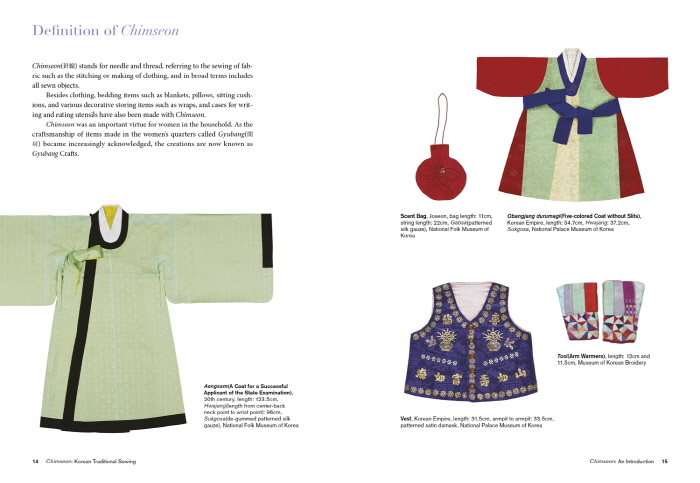
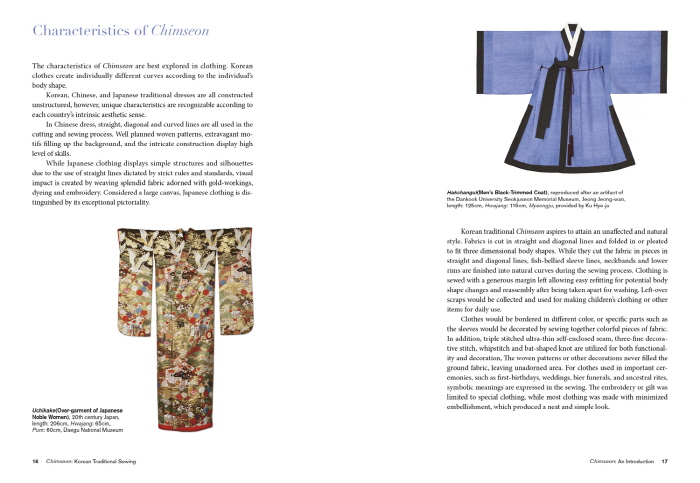
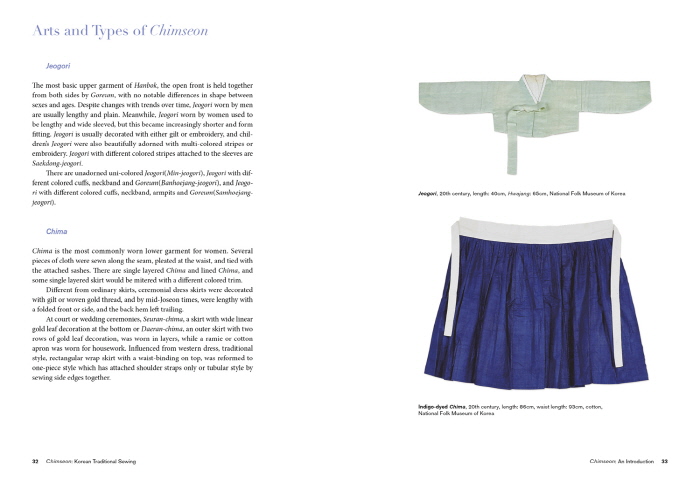
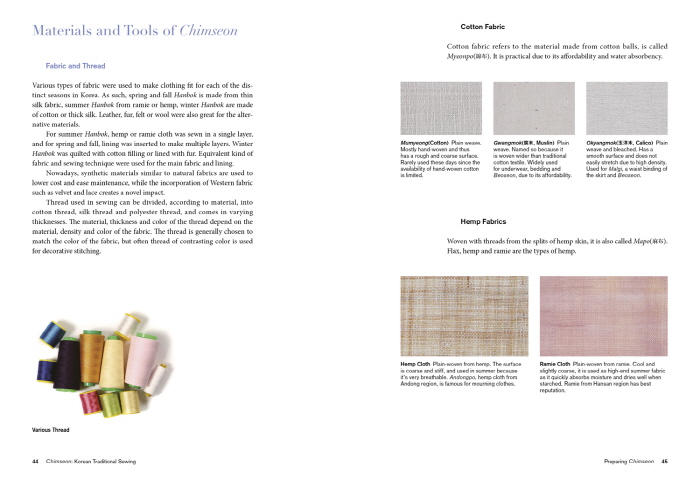
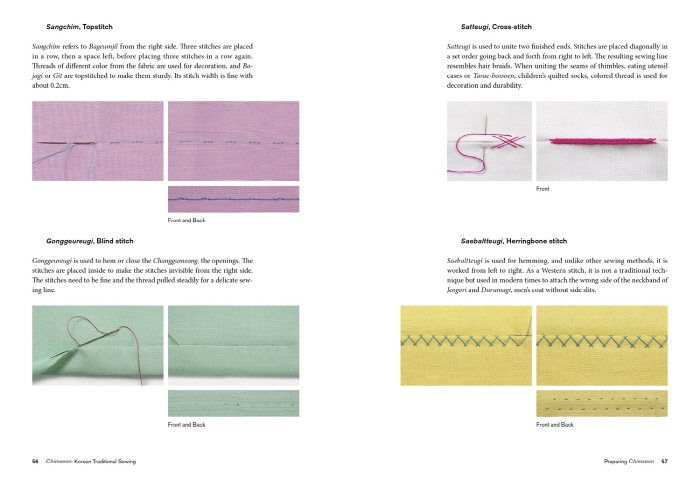
Chimseon(針線) stands for needle and thread, referring to the sewing of fabric such as the stitching or making of clothing, and in broad terms includes all sewn objects.
Besides clothing, bedding items such as blankets, pillows, sitting cushions, and various decorative storing items such as wraps, and cases for writing and eating utensils have also been made with Chimseon.
Chimseon was an important virtue for women in the household. As the craftsmanship of items made in the women’s quarters called Gyubang(閨房) became increasingly acknowledged, the creations are now known as Gyubang Crafts.
-from.‘ Chapter 1. Chimseon: An Introduction’
Jeogori
The most basic upper garment of Hanbok, the open front is held together from both sides by Goreum, with no notable differences in shape between sexes and ages. Despite changes with trends over time, Jeogori worn by men are usually lengthy and plain. Meanwhile, Jeogori worn by women used to be lengthy and wide sleeved, but this became increasingly shorter and form fitting. Jeogori is usually decorated with either gilt or embroidery, and children’s Jeogori were also beautifully adorned with multi-colored stripes or embroidery. Jeogori with different colored stripes attached to the sleeves are Saekdong-jeogori.
There are unadorned uni-colored Jeogori(Min-jeogori), Jeogori with different colored cuffs, neckband and Goreum(Banhoejang-jeogori), and Jeogori with different colored cuffs, neckband, armpits and Goreum(Samhoejang-jeogori).
-from.‘ Chapter 1. Chimseon: An Introduction’
Various types of fabric were used to make clothing fit for each of the distinct seasons in Korea. As such, spring and fall is made from thin silk fabric, summer from ramie or hemp, winter are made of cotton or thick silk. Leather, fur, felt or wool were also great for the alternative materials.
For summer , hemp or ramie cloth was sewn in a single layer, and for spring and fall, lining was inserted to make multiple layers. Winter was quilted with cotton filling or lined with fur. Equivalent kind of fabric and sewing technique were used for the main fabric and lining.
Nowadays, synthetic materials similar to natural fabrics are used to lower cost and ease maintenance, while the incorporation of Western fabric such as velvet and lace creates a novel impact.
-from. 'Chapter 2. Preparing Chimseon'
Chimseon tools were of utmost importance in the past when clothing had to be self-made. Traditional Chimseon tools include rulers, scissors, needles, thimbles, hot and flat irons, which were stored in sewing boxes, pools and needle cases. Needles were considered the most precious of Chimseon tools, and needles of appropriate thickness were used for various fabrics. Hot irons were heated in braziers and used to fold and press seams or smooth out creases, while frying pan-shaped flatirons filled with hot coal were rubbed over fabric held tight by two people. Starched cloth was pounded on a fulling block with a bat.
-from. 'Chapter 2. Preparing Chimseon'
목차
Chimseon: An Introduction
Definition of Chimseon 14
Characteristics of Chimseon 16
History of Chimseon 18
Arts and Types of Chimseon 32
Chapter 2.
Preparing Chimseon
Materials and Tools of Chimseon 44
Chimseon Methods 52
Chapter 3.
Crafting Chimseon
Jeogori 68
Chima 74
Baji 78
Baeja 82
Jogak-bo 86
Chapter 4.
Enjoying Chimseon
Subtle Wit Glistening in Dignity ? Po 92
Asymmetric Yet Well-balanced ? Jeogori 104
Aesthetics of Curves and Slits ? Dang-ui 108
As Practical As It Is Beautiful ? Baeja 114
Graceful Appearance from the Back ? Ceremonial Chima 120
Delicate Dualism of Hiding and Exposing ? Undergarments 126
Square Artistry of Daily Life ? Jogak-bo 132
Born from Women’s Nimble Fingertips ? Sundries in Gyubang 138
Creation of Motherly Devotion ? Children’s Clothing 144
Appendix
Masters 154
Craft & Design Map 155
List of Artifacts and Illustrations 156
Bibliography 160
Collaborators 162
Index 163
배송 시 유의사항
- 반디앤루니스에서 구매하신 도서는 물류 대행 위탁업체 웅진 북센을 통해 배송됩니다.
(배송 포장에 "웅진 북센"으로 표기될 수 있습니다.)
- 구매한 상품의 품질과 배송 관련 문의는 반디앤루니스로 문의 바랍니다.
- 천재지변 및 택배사의 사정에 따라 배송이 지연될 수 있습니다.
- 결제(입금) 완료 후 출판사 및 유통사의 사정으로 품절 또는 절판 되어 상품 구입이 어려울 수 있습니다. (별도 안내 예정)
- 도서산간지역의 경우 추가 배송비가 발생될 수 있습니다.
반품/교환
상품 설명에 반품/ 교환 관련한 안내가 있는 경우 그 내용을 우선으로 합니다. (업체 사정에 따라 달라질 수 있습니다)
반품/교환
-
반품/교환 반품/교환 방법 홈 > 고객센터 > 자주찾는질문 “반품/교환/환불” 안내 참고 또는 1:1상담게시판 반품/교환 가능 기간 반품,교환은 배송완료 후 7일 이내, 상품의 결함 및 계약내용과 다를 경우 문제발견 후 30일 이내에 신청가능 반품/교환 비용 변심 혹은 구매착오의 경우에만 반송료 고객 부담(별도 지정 택배사 없음) 반품/교환 불가 사유 - 소비자의 책임 사유로 상품 등이 손실 또는 훼손된 경우
- 소비자의 사용, 포장 개봉에 의해 상품 등의 가치가 현저히 감소한 경우
- 복제가 가능한 상품 등의 포장을 훼손한 경우 : 예)만화책, 잡지, 화보집 등
- 시간의 경과에 의해 재판매가 곤란한 정도로 가치가 현저히 감소한 경우
- 전자상거래등에서의 소비자보호에 관한 법률이 정하는 소비자 청약철회 제한 내용에 해당되는 경우
- 해외주문 상품(해외 원서)의 경우(파본/훼손/오발송 상품을 제외)
소비자 피해보상
환불지연에 따른 배상- 상품의 불량에 의한 반품, 교환, A/S, 환불, 품질보증 및 피해보상 등에 관한 사항은
소비자 분쟁해결 기준(공정거래위원회고시)에 준하여 처리됨 - 대금 환불 및 환불지연에 따른 배상금 지급 조건, 절차 등은 전자상거래 등에서의
소비자 보호에 관한 법률에 따라 처리함
반품/교환 주소 경기도 파주시 문발로 77, 웅진북센(반디앤루니스)





